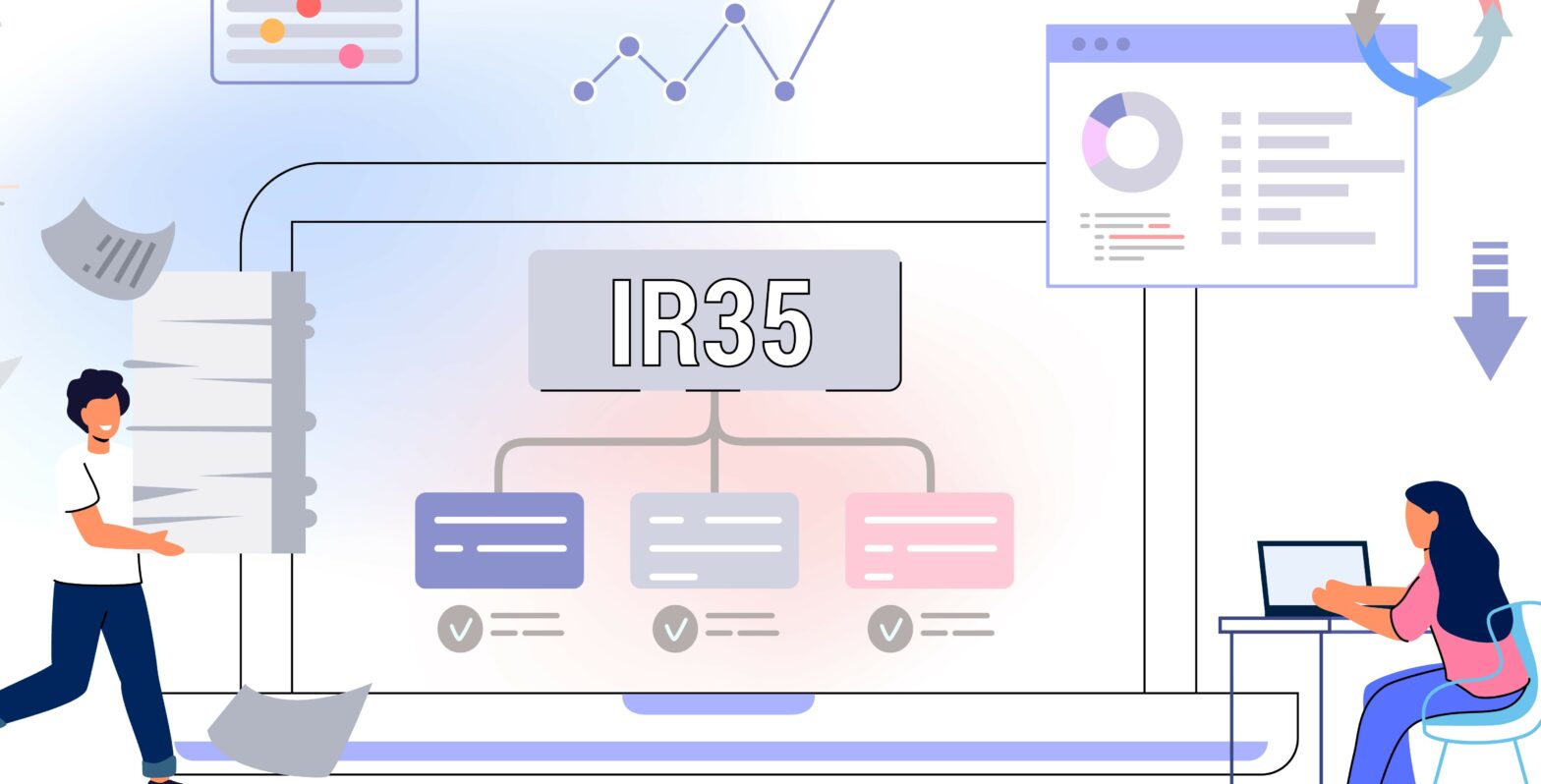IR35 is a tax legislation governing self-employed workers – such as IT contractors and freelancers – who operate through an intermediary, such as a limited company. The rules determine how a contractor pays tax, depending on whether they are “inside” or “outside” of IR35.
What is IR35?
The name comes from the numbered press release that announced the rules, back in 1999 when HMRC was still called Inland Revenue: Inland Revenue 35, or IR35.
Essentially, it was introduced to prevent “disguised employment” and, in turn, ensure contractors pay the correct amount of tax.
Disguised employment occurs when a contractor, working through an intermediary, provides their services just like an employee would, rather than as a provider of professional services.
What does it mean to be inside or outside IR35?
“Inside” or “outside” refers to whether you fall within the scope of the legislation or not. A decision is reached after working practices and the contractual terms of an engagement are put under the microscope.
If a contractor is judged to be “inside” IR35, then they’re considered to be providing their services in a manner akin to an employee. This means that they will be treated like one for tax purposes.
On the other hand, contractors “outside” IR35 are recognised as providing services in a business-to-business relationship – in other words, they’re genuinely self-employed and taxed as such.
Demand for contractors expected to increase following IR35 reforms pause – The legislation change relates to the use of temporary contractors, which would see every medium and large private sector business in the UK become responsible for determining the tax status of any contract worker
What’s the relationship between being inside or outside IR35 and how much tax I pay?
In either scenario, how much tax you pay depends on your earnings, tax band and employment status. But how you pay taxes changes.
Inside IR35, you’re an employee for tax purposes and will be subject to PAYE taxes.
Outside of IR35, it’s slightly more complex. You’re ultimately responsible for calculating and paying the right amount of tax – like any other self-employed worker.
Who is responsible for assessing IR35 status? Is it me, as a contractor, or my client?
Until recently, contractors were responsible for assessing their IR35 status in every engagement. But the rules were reformed and the introduction of the “off-payroll working rules” shifted the responsibility for assessments from contractors to end-clients.
This happened in the public sector in April 2017, and it was extended to the private sector in April 2021. So, public sector bodies – local authorities, the NHS, and so on – and mid-to-large-sized businesses are responsible for IR35 assessments and status determinations.
‘Where small businesses engage contractors, the contractor determines their own IR35 status’
To reach a status determination, these businesses will review contractual terms and your working practices, looking at three key tests – Substitution, Mutuality of Obligation, and Control – among other things.
However, there’s an exception. Where small businesses engage contractors, the contractor determines their own IR35 status.
About these ‘key tests’… why do they matter? What is Substitution, for example?
The key tests establish whether you’re providing your services like an employee or not; substitution – or “personal service”, as it’s also known – is a good place to start.
If the work you’re doing can be completed by a substitute, this starts to suggest that you’re not providing a “personal service”. In the world of IR35, that’s a good thing; personal service is considered typical of employment, and if you act like an employee you may be deemed “inside” IR35.
Making contractual provisions for a substitute doesn’t automatically mean you’re outside the rules – but it reduces the risk of “personal service” arising in a contract.
Right… and what’s meant by Control?
If you think about an employer-employee relationship, there’s control. Generally, an employee conducts their work where and when they are directed to, and there may also be some managerial direction in “how” the work is done, too.
A contractor working outside IR35 shouldn’t be subject to the same level of control that an employee is. They should, in theory, have autonomy over how, where and when they deliver their work.
If you are subject to control, you may be providing services like an employee – and therefore could belong “inside” IR35.
And what about Mutuality of Obligation?
Essentially, Mutuality of Obligation looks at whether there’s a reciprocal obligation between the end-client and the contractor – for the end-client to provide paid work and the contractor to accept it.
Again, this makes more sense if you look at it from the perspective of an employer and employee. A permanent employee can expect their employer to provide work for them to do, and the employer expects them to complete that work.
But for contractors, this shouldn’t be the case. You’ll work on a contract basis, and you shouldn’t be under any obligation to complete work unless it’s agreed in advance.
Ok, I understand. So, in the event of an incorrect determination, who’s liable for the mistake?
As well as responsibility for status determinations, the off-payroll working rules made businesses liable for any incorrect status determinations. But just to make things more complicated, it’s not always the end-client who shoulders this liability – it’s typically the party which pays the fee, which is usually the recruitment agency, when involved.
Liabilities for an incorrect IR35 determination can be expensive, with the responsible party liable for any taxes, plus interest and possibly penalties.
However, contractors engaged by small businesses remain responsible and liable in the event that they have incorrectly determined their own status.
So… does that mean HMRC won’t investigate me?
Unfortunately not.
Contracts that were held and completed prior to the introduction of the off-payroll working rules are, in HMRC’s opinion, fair game.
Contractors remain responsible for any incorrect determinations made pre-reform – and liable for any unpaid tax.
Similarly, any contractors currently engaged by small businesses may be subject to an IR35 enquiry by HMRC.
Is working outside IR35 still a possibility?
Absolutely. At Qdos, we run an annual survey; in 2022, we found that as many as 80 per cent of contractors were able to secure a contract outside IR35 that year.
This proves that it’s still possible for contractors to be placed “outside” of IR35 by their clients. Businesses have had time to adjust to the changes and, as a result, more of your clients should understand how to be compliant managing the rules.
While there will always be some risk-averse end-clients, the landscape today is much more positive than it was immediately after reform.
Seb Maley is CEO of contractor insurance firm Qdos, which has been helping contractors and, more recently, the businesses engaging them, navigate IR35 since 2000
More on being inside or outside of IR35
Information Age’s guide to IR35 for IT employers and contractors – Information Age’s comprehensive guide to the IR35 regulation for the IT sector, featuring insights from employment law experts







